Allow me first to rant:
I understand that transferring major feasts to a Sunday can have the “pastoral” aim of exposing more people to the mystery the feast celebrates. But… for the love of God… Ascension Thursday is on Thursday and Epiphany is called “Twelfth Night” for a reason.
Epiphany is from the Greek word for a divine “manifestation” or “revelation”. The Church’s liturgy for the feast, especially in its antiphons for Vespers, reflect the tradition that Epiphany was thought to be the day not only when the Magi came to adore Christ, but also the same day years later when Jesus changed water into wine at Cana, and also when He was baptized by St. John at the Jordan.
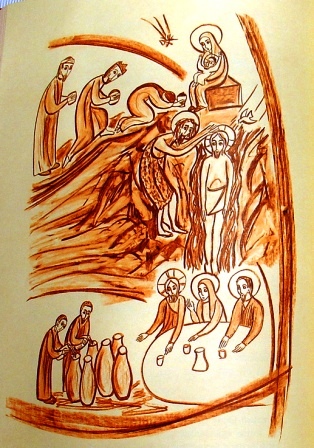 Images of these three mysteries has been maintained in the 2002 edition of the Missale Romanum in the artwork on the facing page for the texts, artwork as I have said in the past that is every bit as good as that which Mommy might proudly display on the refrigerator fixed on with magnets of plastic fruit. The “art” for the Missale is based on the mosaics of a new chapel of the Vatican’s Apostolic Palace built during the Jubilee.
Images of these three mysteries has been maintained in the 2002 edition of the Missale Romanum in the artwork on the facing page for the texts, artwork as I have said in the past that is every bit as good as that which Mommy might proudly display on the refrigerator fixed on with magnets of plastic fruit. The “art” for the Missale is based on the mosaics of a new chapel of the Vatican’s Apostolic Palace built during the Jubilee.
I hope the art in the new editions of the corrected English Roman Missal is better than this. I’ll post another image lower down of what might be in the new volume, as leaked…. if any one is interested.
In any event, in each of these three mysteries Jesus is revealed to be more than a mere man.
He is man and God.
The are many “epiphanies” of God in the Scripture, for example, the burning bush seen by Moses, the Transfiguration, and the above-mentioned.
The history of the modern feast of Epiphany is ancient and complicated history.
In the East Epiphany was an extremely important feast far more important than the relative latecomer Christmas. In the West, the Nativity developed first and the celebration of Epiphany came later. In many places in the world, Epiphany, and not Christmas, is the day to exchange gifts, in imitation of the Magi.
Will you exchange gifts for Epiphany?
The “Opening Prayer” for Mass, or more properly Collect, was in the 1962MR and in other ancient sacramentaries. Enjoy the sound of the Latin by reading it aloud, with the fine rhythmic clausula at the end (celsitúdinis perducámur).
COLLECT (2002MR):
Deus, qui hodierna die Unigenitum tuum stella duce revelasti,
concede propitius,
ut qui iam te ex fide cognovimus,
usque ad contemplandam speciem tuae celsitudinis perducamur.
LAME DUCK ICEL:
Father,
you revealed you Son to the nations
by the guidance of a star.
Lead us to your glory in heaven
by the light of faith.
Well that is what ICEL gave us. But is that what the prayer really says? I suspect not. We are justifiably suspicious when the translation is shorter than the Latin original (which just doesn’t happen, friends). In case you are trying to figure out the ending of revelasti it is a syncopated (shortened) form of revelavisti. Stella duce is an ablative absolute (duce is from dux). Don’t fall into the trap of translating an ablative absolute beginning with “with” (e.g., “with a star as leader”). “With” gives an impression of accompaniment rather than the existing circumstance at the time of the action of the main verb. The adjective hodiernus, a, um, is “of this day, today’s”, so hodierna dies literally is “today’s day”, stronger than a simple “today”. Perhaps we could say, “this day of day’s” or “this of all days”. To my Latin ear this emphasizes the weight of the feast of Epiphany with its three events that are traditionally associated with it. Celsitudo, in your revelatory Lewis & Short Dictionary, indicates in older Latin a loftiness of carriage while in later Latin it points to majesty, as in the title “Highness”.
A LITERAL TRANSLATION:
O God, who today revealed your Only-begotten, a star having been the guide,
graciously grant,
that we, who have already come to know you from faith,
may be led all the way unto the contemplation of the beauty of your majesty.
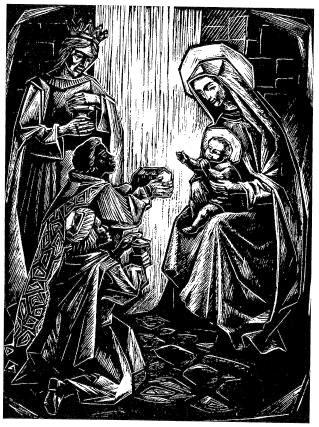 There is depth in the phrase usque ad contemplandam speciem. The noun species (three syllables) is too broad in meaning for this narrow space. Species often means “beauty” in prayers, but it is also a technical philosophical term about the way the human intellect apprehends things. Species, (frequently also called forma, another word for “beauty, splendor”) points at a relationship between the thing known and our knowing power. It allows us to perceive objects directly and without a bridge or intermediary. A famous philosophical adage says, “Quidquid recipitur per modum recipientis recipitur…. Whatever is received, is received in the mode of the one doing the receiving” (cf. St. Thomas Aquinas, STh I, q. xii, a. 4). Species has a transforming effect on the mind of the one perceiving a thing. The object being considered acts upon our power of knowing, and this knowing power acts simultaneously on the object known. So, our knowing power’s “active and passive” dimensions come together in the process and the object of consideration is known directly, without intermediaries.
There is depth in the phrase usque ad contemplandam speciem. The noun species (three syllables) is too broad in meaning for this narrow space. Species often means “beauty” in prayers, but it is also a technical philosophical term about the way the human intellect apprehends things. Species, (frequently also called forma, another word for “beauty, splendor”) points at a relationship between the thing known and our knowing power. It allows us to perceive objects directly and without a bridge or intermediary. A famous philosophical adage says, “Quidquid recipitur per modum recipientis recipitur…. Whatever is received, is received in the mode of the one doing the receiving” (cf. St. Thomas Aquinas, STh I, q. xii, a. 4). Species has a transforming effect on the mind of the one perceiving a thing. The object being considered acts upon our power of knowing, and this knowing power acts simultaneously on the object known. So, our knowing power’s “active and passive” dimensions come together in the process and the object of consideration is known directly, without intermediaries.
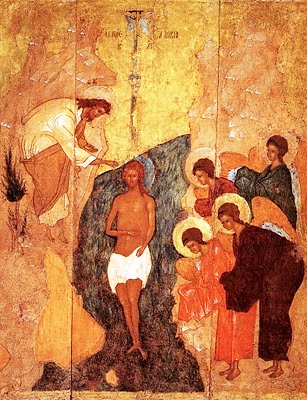 This is what we are praying for, hoping for, living our earthly lives for: we want to see God face to face, directly and immediately. In this life, we know God indirectly, by faith, our intellect being aided by authority of revelation and by grace. This is St. Paul’s “dark glass” (1 Cor 13:12) through which we peer toward Him in longing. In the next life we will not need faith because we will have direct knowledge. In this phrase usque ad contemplandam speciem (a gerundive construction indicating purpose) we are praying to be brought “all the way to the beauty” of God “which is to be contemplated”. This vision of His beauty will increase our knowledge of Him and therefore our love for all eternity.
This is what we are praying for, hoping for, living our earthly lives for: we want to see God face to face, directly and immediately. In this life, we know God indirectly, by faith, our intellect being aided by authority of revelation and by grace. This is St. Paul’s “dark glass” (1 Cor 13:12) through which we peer toward Him in longing. In the next life we will not need faith because we will have direct knowledge. In this phrase usque ad contemplandam speciem (a gerundive construction indicating purpose) we are praying to be brought “all the way to the beauty” of God “which is to be contemplated”. This vision of His beauty will increase our knowledge of Him and therefore our love for all eternity.
This is what we were made for: His glory and splendor. They will transform us, making us more and more like what God is by our contemplation of them for ever and ever. The Fathers of the Church, such as Hilary of Poitiers (+367), spoke of the glory of God as a transforming power which divinizes us by conforming us more and more to His image. In our prayer, there is a move from faith to knowledge in the Beatific Vision. Christ is the visible image of the invisible God, He is the Beauty and Truth of the Father. Christ could be seen as the species of this prayer. In heaven, God’s Truth and Beauty are indistinguishable and we will see them directly and be thus transformed during all eternity.
This prayer has meaning for our earthly lives: we need beauty now as well.
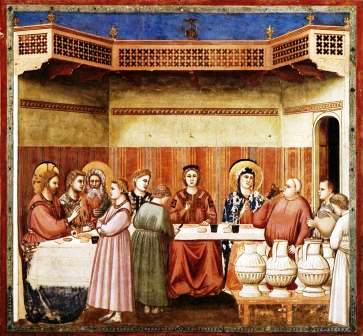 The influence of post-modernism, particularly in education, has made it harder and harder for people to grasp the existence of objective truth. Ugly images flood our vision, hideous noises our ears. This numbs us to beauty and therefore apprehensions of truths.
The influence of post-modernism, particularly in education, has made it harder and harder for people to grasp the existence of objective truth. Ugly images flood our vision, hideous noises our ears. This numbs us to beauty and therefore apprehensions of truths.
In a post-modern view everything relative, we cannot really know things with certainty nor can we communicate them, and nothing is admitted as unchanging or eternal. The discord and restlessness this provokes in life has nothing to do with God. But it has nothing to do with man either, at least in the way he was made and what he is intended for.
Dante in the Paradiso of the Divine Comedy invents a new word, “transhumanize”, to describe what happens to us through the Beatific Vision. In our direct contact with God we are simultaneously made more and more like God and also more and more what we are supposed to be, God’s images. In being “transhumanized” in this world and the next, His grace perfects our nature, not destroys it. In this life, holiness and the life of virtues is what does this. Think of the document of the Holy Father, concerning moral theology, called Veritatis splendor… The Splendor of the Truth.
If eternal beauty transforms man, “divinizes” him, then in this life beauty (Truth’s echo) can change him as well.
So will ugliness.
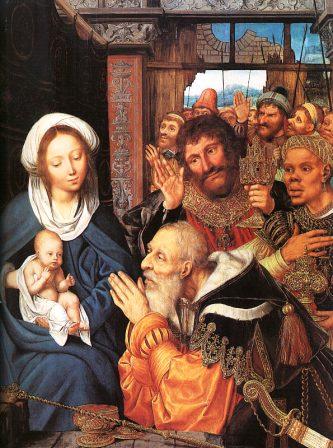 The current dissolution of formal education in fundamentals and tools of learning has rendered many people incapable of following easily a linear argument to a conclusion that they will accept because it must perforce be true: “It is true for you, maybe,” they often respond.
The current dissolution of formal education in fundamentals and tools of learning has rendered many people incapable of following easily a linear argument to a conclusion that they will accept because it must perforce be true: “It is true for you, maybe,” they often respond.
Could the proper use of and fostering of beauty in our churches help us reach people in a way that the systematic approach and arguments may not be able to effect at this time? Once people have seen God’s truth shining through beauty (of music, motion, language, environment) they can be reached in other ways.
The Church has given two things as a common inheritance for all mankind: art and saints. In art, God’s truth and beauty are reflected in inanimate creation. In the lives of saints, God’s truth and beauty shines forth in living creatures, His images. In both, we find the beauty which points to the truth. The beauty of the truth and the truth of beauty can affect every dimension of our lives now, in anticipation of heaven.
Our true Catholic faith and our splendid liturgy show forth the truth and beauty of God in a way that urges us to find the most accurate and beautiful words, actions, music we can possibly summon from human genius, labor and love. What we say and do in church ought to be a foretaste of heaven and the Beatific Vision.
The Church must once again reclaim her role as the greatest patron of the arts in human history. Beauty in liturgy can be a manifestation of the divine, a revelation, an “epiphany”. In a new translation of the Missal, our bishops will have the chance to give us a precious gift: a new glimpse of God through beauty and truth in words. When we go to Mass we are like shoeless Moses’ meeting God in the burning bush which is not consumed. We are like the Magi whose penetrating sight is fixed upon the infant Jesus, in whose perfect image something of the invisible Father is revealed.
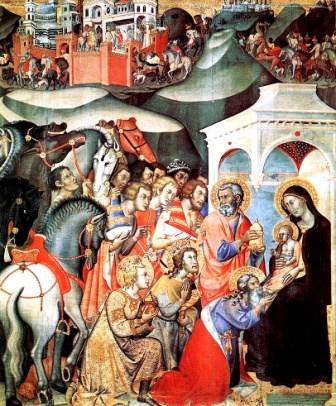 2008 CORRECTED ICEL VERSION:
2008 CORRECTED ICEL VERSION:
O God,
who on this day revealed your Only Begotten Son to the nations
by the guidance of a star,
grant in your mercy
that we who know you now by faith
may be brought to behold
the beauty of your sublime glory.
2010 REVISED CORRECTED ICEL:
O God,
who on this day revealed your Only Begotten Son to the nations
by the guidance of a star,
grant in your mercy
that we who know you already by faith
may be brought to behold
the beauty of your sublime glory.


































There is so much here to contemplate and I will continue to at least until the calendar day of the traditional Feast of the Epiphany. Would only like to note here that the beauty of art, music and literature of Christianity, from ancient forms to the contemporary, has played a constant role in the development of my faith and ‘reversion(s)’. In very surprising ways (and sometimes fairly unwitting sources) one could say that this role of beauty and the truth and wisdom found there protected me when my faith was not strong enough to carry through. Time after time, secular and even anti-Catholic mouthpieces have presented to me the value of the aesthetic aspects of Christian art, music and literature, down through the ages. The truth of the message presented by people like Giotto, Dante, Fra Angelico, Ghiberti and so many others was eventually allowed to ring out and I credit the patience, gentle example, and prayers of so many along the way to this fact.
The “art” for the “Missale Romanum” looks as if it were done by a child attempting to imitate Marc Chagall with only two crayons. The rest of the art brings to mind “Beauty is the splendor of truth.”
Thank you a million times for this phenomenal meditation. I bumped into “forma”, beauty, and Truth through the writings, paintings, and other works of David Jones in the early 1980s, St. Thomas Aquinas and Jacques Maritain, whose Art and Scholasticism and series of lectures on the aesthetic and religion, published under Creative Intuition in Art and Poetry were turning points in my life, as was the participation in the Byzantine Divine Liturgy, which points out the Epiphanies as you have mentioned. Many years ago, I wrote a series of poems on the Magi. For some of those, I received national recognition. But, the impetus was and is the Beauty of God as shown forth to all men through all His Epiphanies. When those in the Church become iconoclasts, or anti-intellectual or anti-beauty, they are infected with the worst of heresies-the denial of the Incarnation. I shall re-read this meditation this evening at more leisure. Is not this one of the vocations of those of us in the Church, to join in the manifestation of Beauty, through mimesis?
Unfortunately, until the Church takes seriously again her role as patron of great artists, and encourages her wealthy members to do the same, we’re likely to get more of the awful stuff in the first illustration. I’m prejudiced against woodcuts because they have been so abused by the same sort of amateur who perpetrated the monochrome distorted Highlights of the Life, but they CAN be good.
The other illustrations show us so poignantly what we have lost.
The Matsys always reminds me of one of my favorite artists, Arthur Szyk. It’s not just the gesture and tilt of the head of the middle Wise Man, although that’s part of it.
Regarding Father Z’s Comments against Post Modernism:
A fundamental part of my graduate education (masters/doctorate) in clinical psychology was to accept that the only truth is that there IS NO OBJECTIVE TRUTH… In other words… that any so called “truth” is “inter-subjective” and “socially constructed.” I cannot adequately describe the damage that this lie has done to the minds and to souls… Not only of trained psychologists but to students taking psychology in college and to patients and clients… Many people are lost because of it. It is a great tragedy… And it has even affected Holy Church and Her Liturgy. Please pray earnestly against the errors of post-modernism…
Thanks for this, Father.
Two days ago I was at Fr. George Rutler’s Church of Our Saviour in New York for Mass. I was thinking about this topic when I was there. I was heartened by the place, which shows that beauty in art is STILL possible for the modern Catholic Church. The church was built in 1959 (at a time when Catholic church architecture was transitioning from candy-corn “traditional” like the Basilica of the National Shrine of the Immaculate Conception in DC to aggressive Modernist design), but most of the iconography was painted by artist and parishioner Ken Woo over the last few years.
It’s a beautiful and inspiring space, and its beauty is properly directed, ad maiorem Dei gloriam. I was also happy to finally see the brand-new Blessed John Henry Newman shrine.
God bless Fr. Rutler for patronizing new Catholic artists who understand the splendor of truth.
Supertradmum: So interesting to me to read of your journey!
Regarding gifts at Epiphany also wanted to mention that La Befana does indeed make a stop in our household, and has come every year on the Feast of the Epiphany (not necessarily on the Sunday day of recognition) since we were blessed with a child. It started as a nod to extended family and ancestors who worked very hard with little or nothing, yet with such love and dignity, to pass on the faith in the home. Though of course they hoped for success, education, material wealth for their children and grandchildren, they without any doubt hoped for, first and foremost, their salvation, and they made this hope known through relatively quiet but deliberate means. Also the story of LaBefana is retold every year so we are all very familiar with what happened to Befana, that in her narrow-mindedness and preoccupation with the details of her immediate agenda, she missed the invitation to come and adore the Baby King! Thus she over-compensates in generosity all around the world (and especially in Italia) visiting and giving to all little children, continually playing catch-up to this day. And we also know that Santa means Saint and what Saint Nicholas did to institute the tradition of giving gifts to one another in His name. In our immediate area there is no support or encouragement to do these things so for us from hierarchy or parish and so we regard them as examples of the many quirky but essential aspects of our life in the Domestic Church.
“But… for the love of God… Ascension Thursday is on Thursday and Epiphany is called “Twelfth Night” for a reason.”
I wish the Holy See would forbid these days to be moved. By all means, remove the obligation but keep them on Thursday and 6 January! And let the “external solemnity” concept in the Extraordinary Form be brought into the Ordinary Form and celebrate these feasts twice in order to expose more of the faithful to them, just like Corpus Christi in the EF.
People who want to go to church will go even if the Mass is on a Thursday, a Tuesday, a Saturday, or what ever. Even if it means going two days in a row, people who are in a state of grace love to go to church. Moving Feasts to Sundays won’t make those Feasts available to people who wouldn’t be caught dead in church- even on a Sunday.
Goodness, for the will, Truth, for the intellect, Beauty, both shining in splendor…
Beautiful reflection, Father.
And I wholeheartedly agree with Geoffrey that these days should not be moved.